Outside Exhibits (Living History)

1860s and 1890s
Out on the 1860s and 1890s living history farms visitors will learn about the evolution of daily life and culture in this area of Colorado in the 19th century. Interpretive staff and volunteers dressed in period-appropriate garb perform the day-to-day activities essential to 19th-century farm life.
Their work, in addition to explaining historic trades and skills, is to maintain the two gardens and the livestock on both farms. Much of the produce that visitors see being used in cooking demonstrations comes from the gardens these interpreters plant and maintain throughout the year.
Unique to each farm are the breeds of livestock and the types and varieties of plants found in the gardens and fields. Great care has been taken to ensure that plants and animals are historically accurate for the time period they represent.
While there are animals on the farms, this is not a petting zoo. Do not feed or pet the animals.
1860s Living History Farm
The 1860s living history farm, found on the south side of the Littleton Museum's 40 acres, represents a pioneer homestead during Littleton's settlement period - a time before train travel, when oxen-drawn wagons were a main mode of long-distance transport.
1865 Schoolhouse
Original Historic Structure - Relocated to Museum for preservation
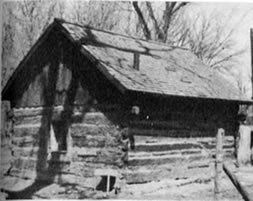
Littleton's first schoolhouse built in 1865. Photo date unknown.
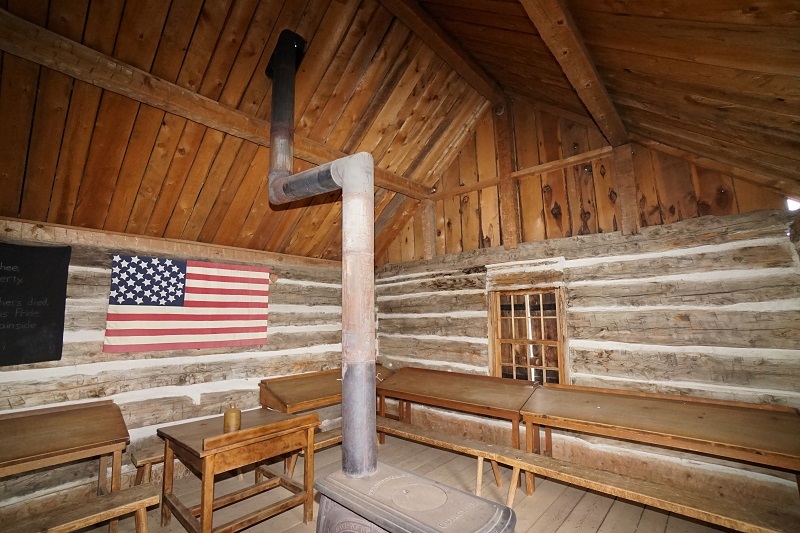
The schoolhouse interior as it is laid out today
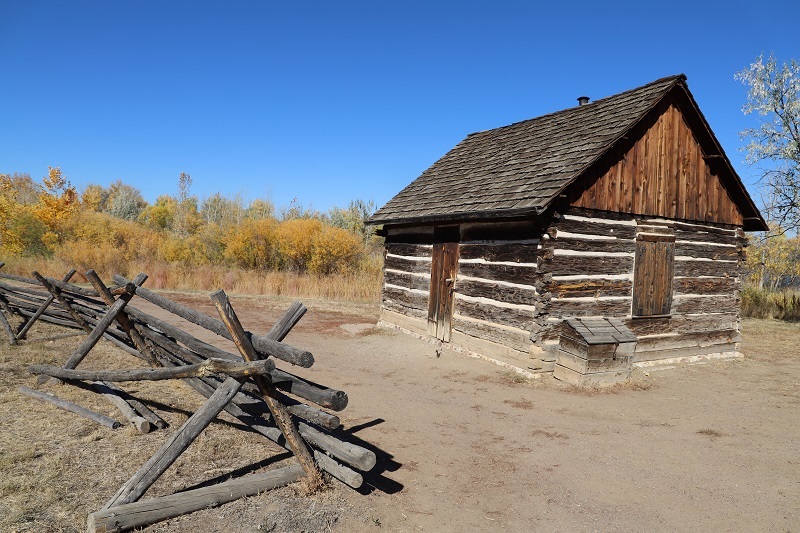
The schoolhouse exterior
This schoolhouse, the first in Littleton, represented some of the first steps taken by the citizens of this area to establish a formal township. It was constructed by John Bell in 1865 for $65, on the property of Harry Pickard. The first teacher was L.B. Ames, who was paid $40 per month during 1866-1867 to teach fifteen pupils.
The schoolhouse was moved from its original location to Bega Park (then Rio Grande Park) in the late 1940s, and to its present location at the Littleton Museum in July 1972.
Learn more about the first schoolhouse built in Littleton School District.
Beers Sisters Icehouse
Original Historic Structure - Relocated to Museum for preservation
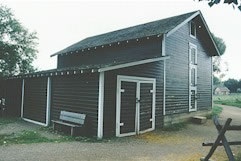
The Beers Sisters were local women who were highly respected and successful in farming and operating a dairy business at the turn of the century. They ran a prosperous dairy farm and retail business through the early 1950s. The building here is their icehouse, which would have been filled with 200-lb blocks of ice cut from a frozen lake and used to cool their dairy products. The icehouse was originally located on the shore of Bowles Reservoir #1 (by the southwest corner of Marston Lake). It was constructed in 1900. The sisters used it for their dairy business from 1909 until 1926, when they invested in an ice machine. The building was then used as a granary. The sisters sold their business in 1951. The icehouse was moved to the Littleton Museum for preservation in 1981.
Learn more about the Beers Sisters and their dairy business.
1860s Cabin
Original Historic Structure - Relocated to Museum for preservation


The McBroom Cabin after a snowstorm in 2023

Museum interpreter making a quick cheese in the McBroom cabin
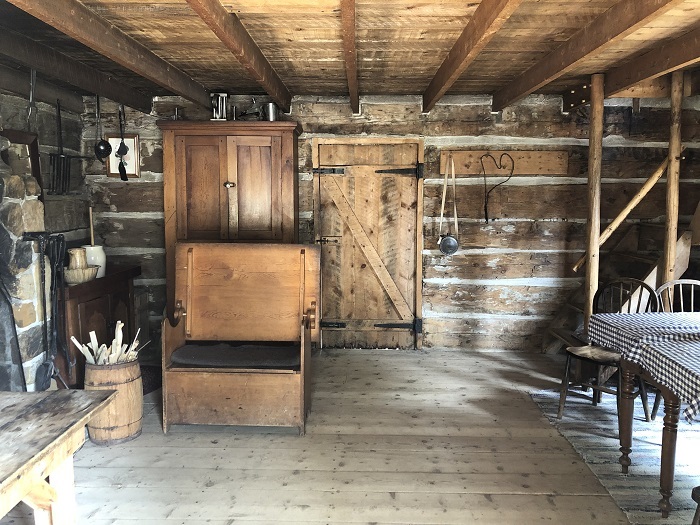
Present-day interior of McBroom cabin
The cabin here belonged to one of the two McBroom brothers, John and Isaac, who claimed land in Colorado's South Platte River Valley, near Bear Creek. John moved west first and saw the Platte River Valley on a military expedition with Capt. R.B. Marcy. He later settled the area for the purpose of farming and sold produce to miners.
His brother Isaac later joined him to farm the area as well. This cabin is typical of what the early days of Colorado settlement.
Learn more about the McBroom Family.
Sheep Shed
Original Historic Structure - Relocated to Museum for preservation
The sheep-shed is also an original structure from Colorado’s earliest days of American immigration in the 1860s. Little is known about this structure, but that it was owned by a shepherd who lived in the small space during his first winter in Colorado and converted it into a sheep barn the next year when he had built a more comfortable home for himself.
1860s-style Barn
Modern recreation

The barn in 2005

The barn in 2021
A log barn assembled in 1983 to represent a typical log barn similar to those built along the South Platte River Valley
Root Cellar
Modern recreation
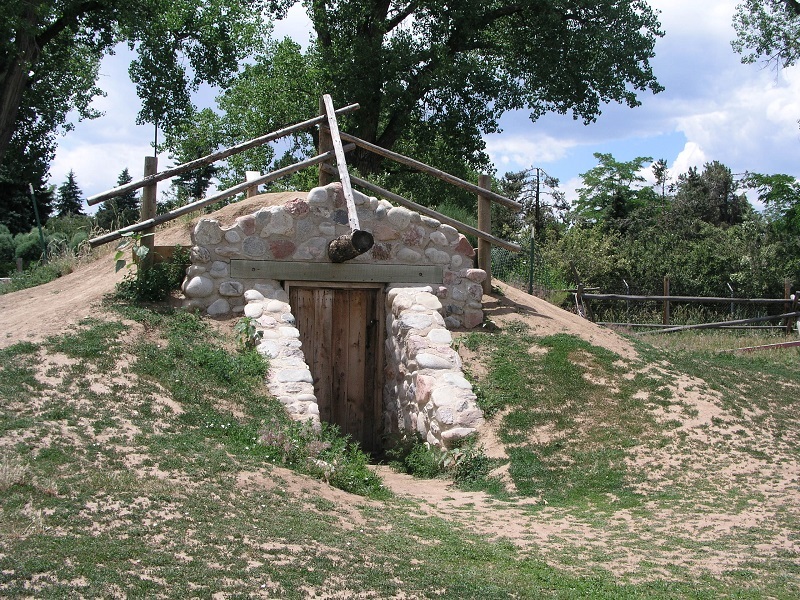
The root cellar in 2003
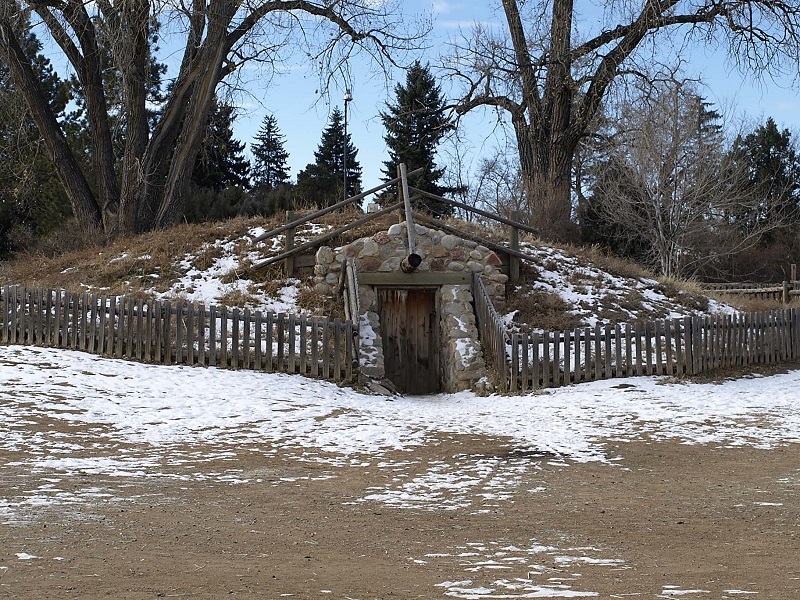
The root cellar in 2008

The root cellar in 2022
It may look a little like a sod house or storm shelter, but this is a root cellar. The more consistent temperature underground allows for longer-term storage and aging of food products.
1890s Farm
On the north side of the Littleton Museum's 40-acre property is the 1890s living history farm. Because of advancements in technology and transportation (most importantly, the arrival of train lines), the farm appears more highly developed than the 1860s farm.
1890s Farm House, also called "Bemis House"
Original Historic Structure - Relocated to Museum for preservation
This frame home was commissioned by Judge Fred Arnold & Elizabeth Bemis. The house was originally located east of the railroad tracks and was the home offices for the Bemis dairy farm. The home is furnished much as one would have been in the 1890s; of special note is the wallpaper, which is a reproduction that is very similar to the original wallpaper selected by Bemis’ when they lived in the house.
Learn more about the Bemis Family.


Blacksmith Shop
Recreation based on a historical structure
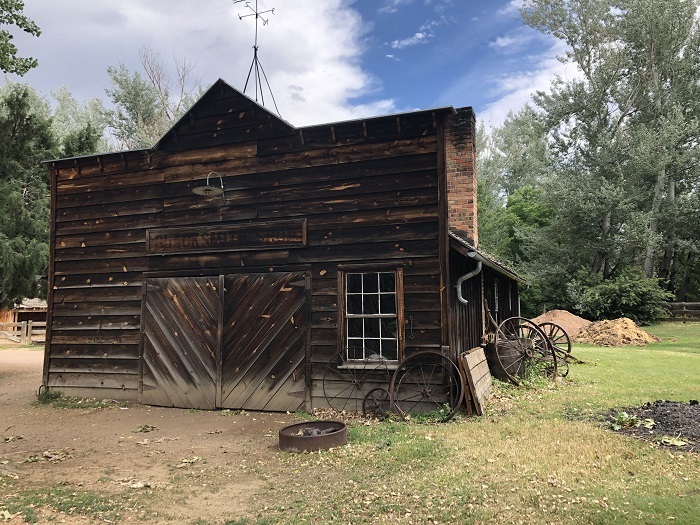
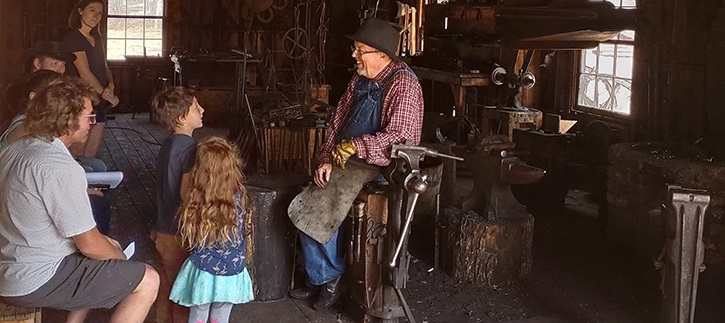
Blacksmithing is one of the oldest trades and was invaluable around any farm or town. The blacksmith shop was a fixture, and a necessity in any town before the invention of the automobile. Blacksmiths were skilled craftsmen who often worked as farriers (shoeing horses), repairmen for broken tack or farm equipment, and artisans making fine iron embellishments for local homes. This blacksmith shop is modeled after a 1903 structure in Ohio. That was the year in which electricity reached Littleton. This allows the museum to take advantage of and use in demonstrations many of the tools and equipment in the museum's collection.
Visitors will get the opportunity to interact with and see volunteer blacksmiths demonstrating real forging. These volunteers are typically in the blacksmith shop in the mornings, until the early afternoon (or until it's too hot outside in the summer). Call the Museum to check their schedule for a given day (303-795-3950).
Other Structures
The other buildings on the 1890s farm are reconstructions, representing typical buildings that an 1890s family farm would need, such as a barn, tool shed, and privy.
Livestock
For animal-loving visitors there are plenty of livestock out on the farms. Each animal has been selected because there is evidence of their breed in 19th century records from this area. The living history farms' livestock includes pigs, cows, sheep, oxen, horses, turkeys, and chickens. The animals live here all year round and are tended by experts.
The sheeps' wool is shorn in the spring at the annual Sheep to Shawl event, and the oxen are brought out to pull wagons or a plow depending on field conditions. Visitors can experience the authentic sights, sounds, and smells that characterized Littleton’s past.
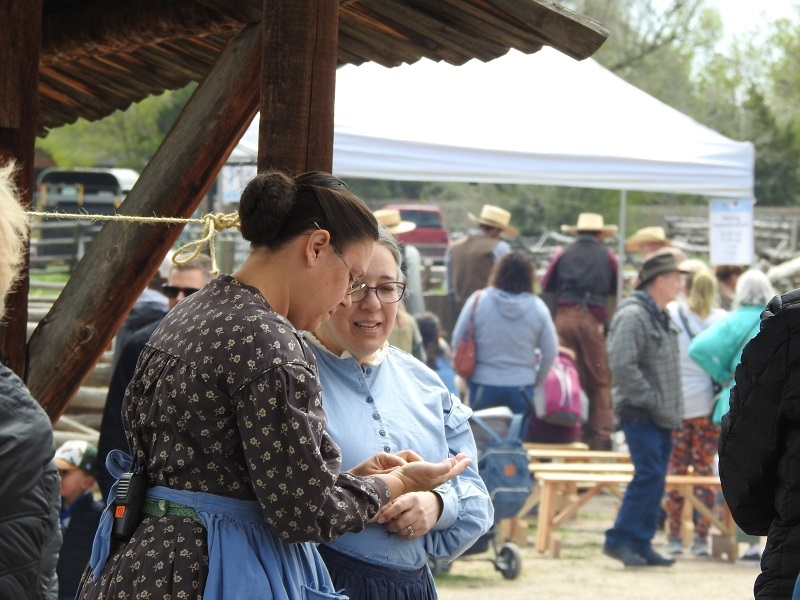
Farm interpreter and volunteer examining sheep wool up-close at Sheep to Shawl

A team of oxen hauling hay as part of a demonstration
Are the Animals Okay in the Summer & Winter?
Yes! The Museum staff work hard to ensure the animals are comfortable when the temperature rises or dips.
In hot weather, they have fans inside their shade structures and the staff constantly refreshes their water troughs. The animals are from breeds that are local to the area, so they are well-suited to the hot summer weather of Colorado.
In cold weather, the livestock receive straw beds to bundle down in. They receive extra hay for extra calories to help their bodies to produce the needed body heat. Their water has heaters to prevent freezing. The poultry (chickens and turkeys) are given as much food as they can eat and are under heat lamps in their coops.
